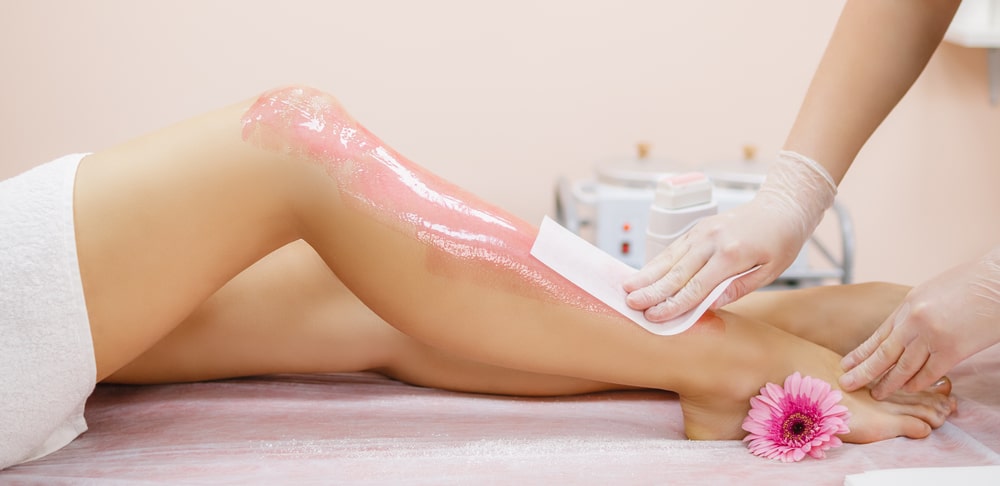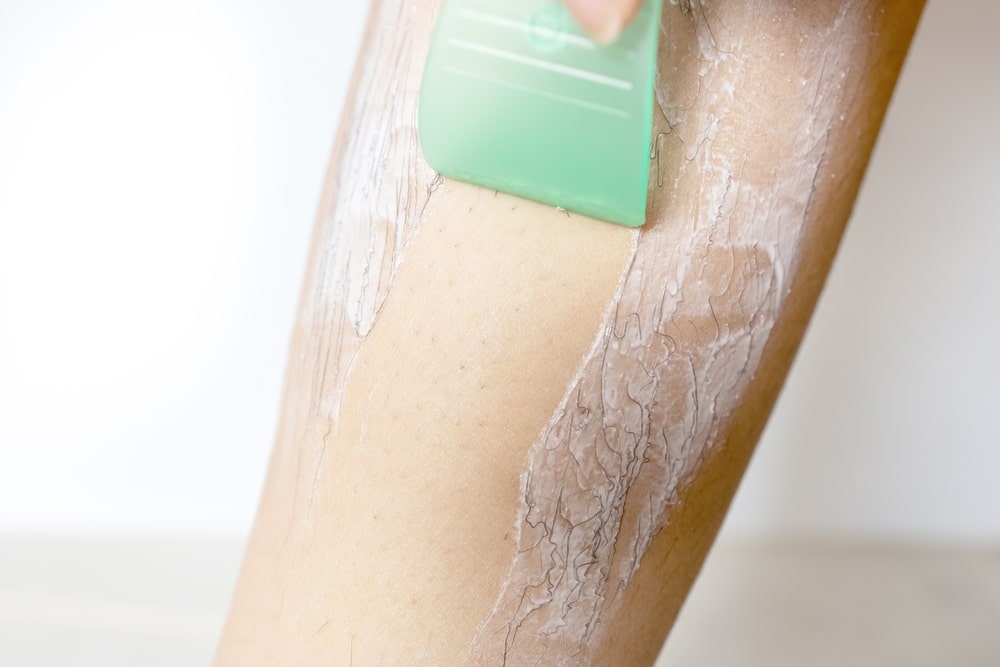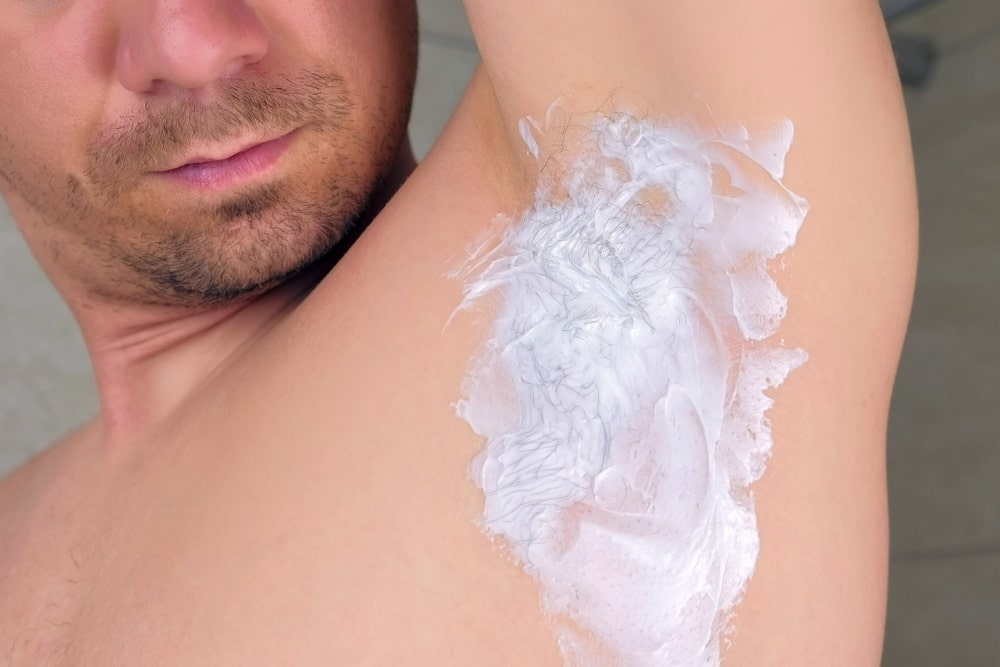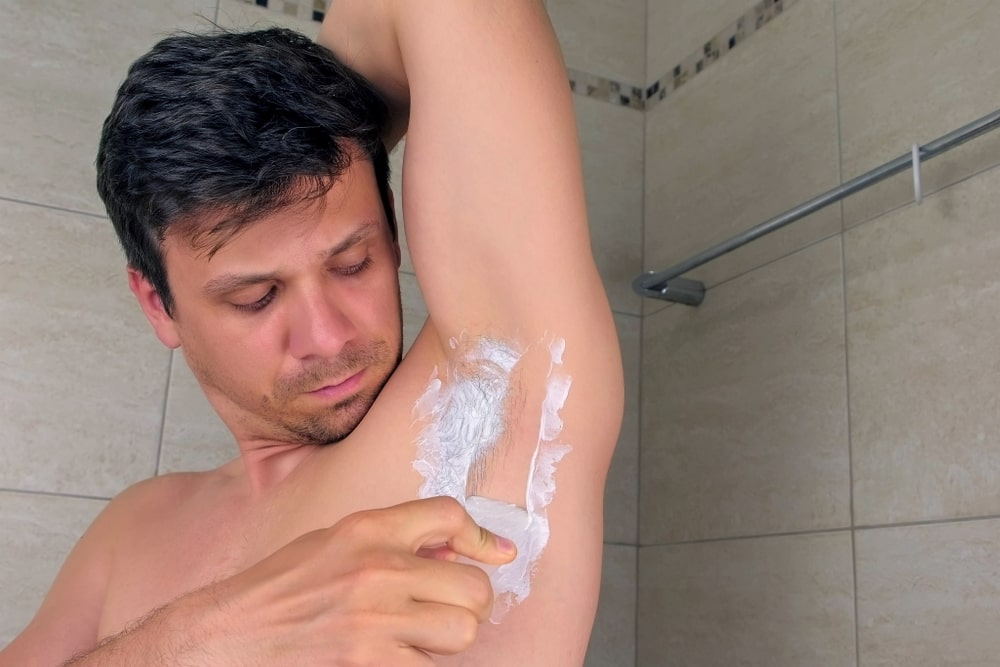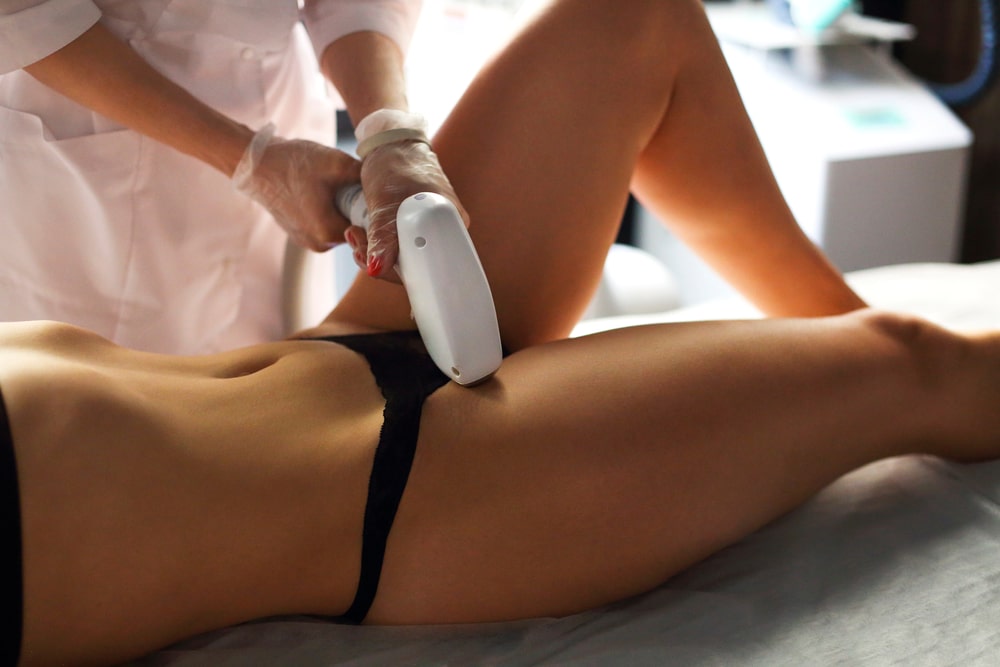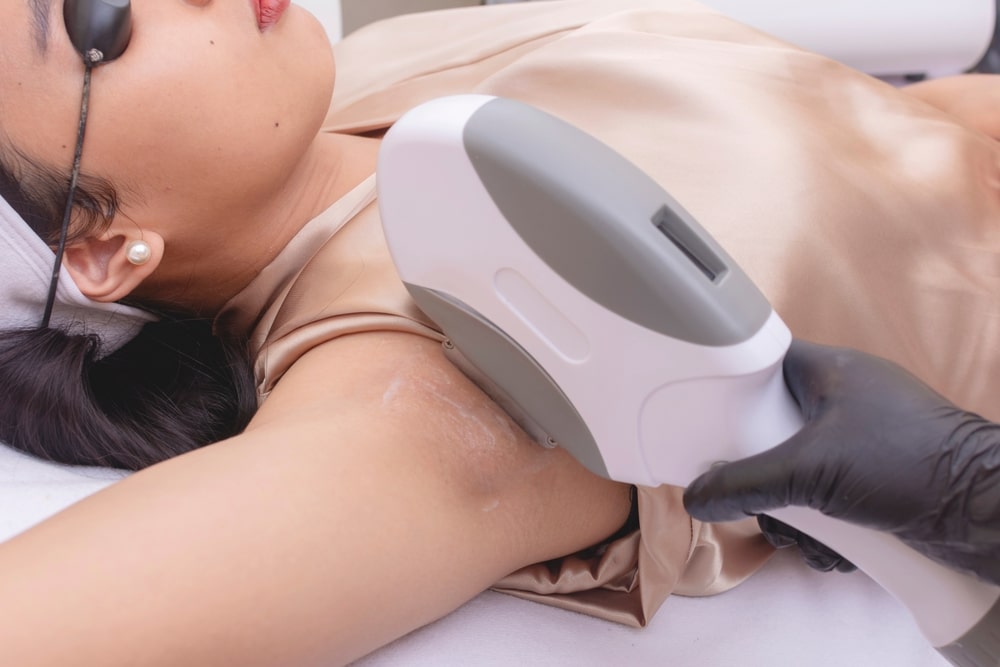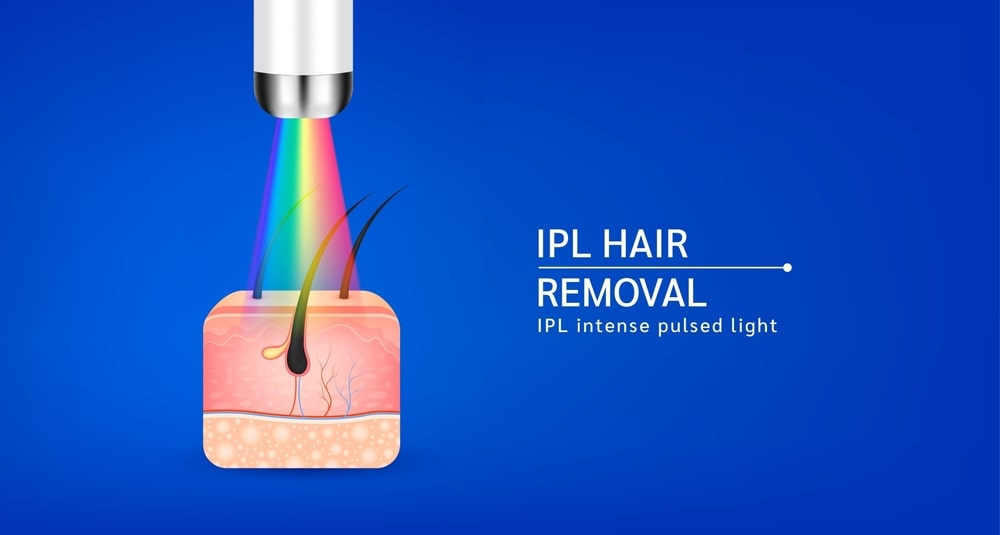Hair Removal Methods & Choosing The Right One For Your Skin
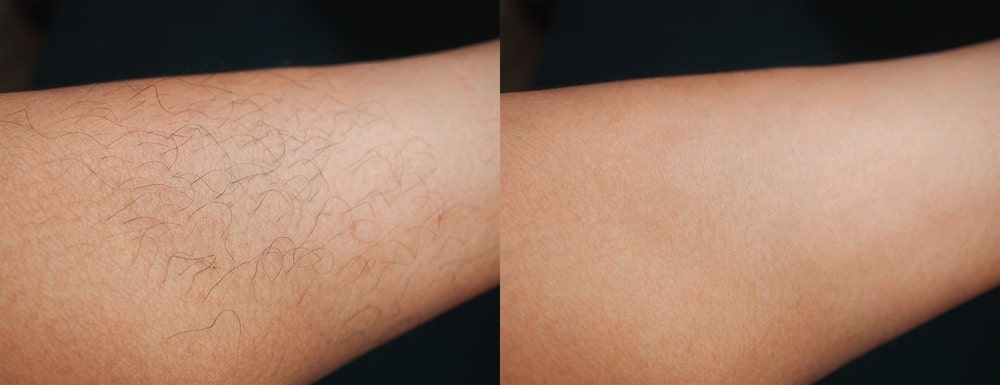
Dealing with unwanted hair can be a real hassle. Whether it's on your face, legs, or anywhere else, finding the right hair removal method can feel like searching for a needle in a haystack.
Shaving may be quick and easy, but it doesn't last long and can lead to ingrown hairs.
Waxing might last longer, but the pain and mess aren't for everyone.
And what about all those other options like laser hair removal, electrolysis, or even depilatory creams?
This blog post is here to help you navigate the world of hair removal and find the method that best suits your skin and your needs.
We'll explore the various options available, from the tried-and-true to the cutting-edge, discussing the pros, cons, and potential side effects of each.
1. TEMPORARY HAIR REMOVAL METHODS
Shaving
Shaving, which is the most popular hair removal method, is cheap, fast, and simple to do. But it only cuts hair off at the skin's surface and does not remove it entirely from the root.
This makes hair grow back quickly and sometimes causes ingrown hairs or skin irritation.
While convenient, shaving only provides temporary results, with hair growing back within a day or two. This is because shaving cuts the hair bluntly, it can sometimes lead to ingrown hairs and inflamed follicles.
Additionally, using dull razors or inadequate shaving cream can irritate the skin and cause nicks and cuts, potentially leading to infection.
Pros
- Ease and Convenience: Shaving is quick, easy to learn, and can be done at home without special skills.
- Cost-Effective: Razors and shaving cream are relatively inexpensive compared to other methods.
- Suitable for Large Areas: Shaving is practical for removing hair from larger areas like legs and arms.
Cons
- Short-Lived Results: Shaving only removes hair at the surface, leading to stubble within a day or two.
- Risk of Ingrown Hairs: Shaving can cause hairs to grow back with blunt tips, increasing the likelihood of ingrown hairs and folliculitis (inflammation of hair follicles).
- Skin Irritation: Using dull blades, insufficient shaving cream, or improper technique can lead to razor burn, cuts, nicks, and potential infections.
Best Use Cases:
- Non-sensitive skin: Individuals with non-sensitive skin may tolerate shaving well.
- Large areas: It's suitable for quickly removing hair from legs, arms, underarms, and other large areas.
- Frequent hair removal: If frequent hair removal is desired, shaving's convenience makes it a viable option.
Waxing
Waxing involves spreading warm or cool wax on your skin, which sticks to the hair. A strip of cloth or paper is then applied and quickly pulled off, taking the wax and embedded hairs with it.
Because the hair is pulled out from the root (the follicle below the skin's surface), it takes much longer to grow back compared to shaving.
While effective, waxing can be uncomfortable and sometimes leads to ingrown hairs or skin discolouration (a.k.a hyperpigmentation) if not done properly.
Therefore, it's often recommended to have it done by a trained professional.
Pros
- Longer-Lasting Results: Waxing provides smooth skin for several weeks, as hair is removed from the follicle.
- Finer Regrowth: With repeated waxing, hair may grow back finer and sparser.
- Exfoliation: Waxing removes dead skin cells along with hair, leaving skin feeling smooth.
read more about exfoliation here
Cons
- Painful: Waxing can be quite painful, especially in sensitive areas.
- Messy: Hot wax can be difficult to work with and may leave residue on the skin.
- Risk of Burns and Infections: Hot wax can burn the skin if applied too hot, and improper waxing techniques can increase the risk of infection.
- Not Suitable for Certain Medications: Individuals using medications that thin the skin (like retinoids or some antibiotics) should avoid waxing, as it can pull off skin.
Best Use Cases:
- Individuals with a high pain tolerance: Those who don't mind some discomfort.
- Areas with coarser hair: Waxing is effective for removing thicker hairs on areas like the legs, bikini line, underarms, and upper lip.
- Those who want longer-lasting results: Waxing provides a longer period of smooth skin compared to shaving and depilatory creams.
Depilatory Creams
Depilatory creams use chemicals to break down the structure of your hair, making it easy to wipe or rinse away.
Different creams are formulated for different areas of the body because the skin thickness and sensitivity vary. Using a cream designed for thicker hair, like pubic hair, on your face could cause burns.
It's crucial to follow the product instructions carefully, especially regarding how long to leave the cream on your skin. Leaving it on for too long can cause chemical burns. If you have sensitive skin or a history of allergic reactions, always do a small patch test on your arm before applying the cream to a larger area.
Pros
- Painless: Depilatories are generally painless, unlike methods that pull hair from the root.
- Lasts Longer Than Shaving: Because the hair is dissolved closer to the skin's surface, results tend to last slightly longer than shaving.
- Reduced Risk of Ingrown Hairs: Hair grows back with tapered ends, potentially minimizing ingrown hairs compared to shaving.
Cons
- Chemical Irritation: The chemicals in depilatories can irritate sensitive skin types, causing redness, burning, or allergic reactions.
- Potential for Burns: Misuse, such as leaving the cream on too long, can cause chemical burns.
- Strong Odor: Some depilatory creams have a strong, unpleasant odour.
Best Use Cases:
- Sensitive skin (with caution): If you have sensitive skin, test the cream on a small area first to check for reactions.
- Small to medium areas: Depilatories are suitable for areas like the upper lip, bikini line, and underarms.
- Individuals who want to avoid shaving: A good option for those who experience razor burn or ingrown hairs with shaving.
2. SEMI-PERMANENT HAIR REMOVAL METHODS
Epilators
Epilation removes the entire hair, including the part under the skin, unlike shaving which only cuts the hair at the surface.
This means the hair takes longer to grow back, sometimes resulting in permanent hair removal if the hair follicle is damaged enough.
However, there are some downsides. Pulling hair out can be a little painful and may irritate the skin. If the hair breaks instead of being pulled out cleanly, it can become ingrown, sometimes leading to infection.
Pros
- Longer-Lasting Results Than Shaving: Hair is removed from the root, so regrowth takes longer than surface-level methods like shaving.
- Potential for Hair Thinning: Consistent epilation over time may weaken hair follicles, leading to finer regrowth.
- Convenience: Epilators are easy to use at home and provide quick results.
Cons
- Discomfort/Pain: Epilation can be painful, especially initially, as multiple hairs are pulled out simultaneously.
- Skin Irritation: Redness, bumps, and ingrown hairs can occur, especially for those with sensitive skin.
- Less Effective on Coarse Hair: Epilators may not be as effective on very thick or coarse hair.
Best Use Cases:
- Individuals with a moderate pain tolerance.
- Suitable for various body areas: Legs, arms, underarms, bikini line.
- Those seeking longer-lasting results than shaving or depilatories.
Intense Pulsed Light (IPL)
Intense Pulsed Light (IPL) hair removal is a long-term hair removal method that uses light pulses to destroy hair growth cells. IPL devices work by emitting flashes of light that are absorbed by the melanin in hair shafts, preventing hair from growing back.
As seen in the images above, IPL devices use flashlamps, like a camera flash, but emit a wide range of light colours (wavelengths). Because IPL uses a wide range of light, it can address multiple skin concerns at once.
Pros
- Reduced Hair Growth: Multiple IPL treatments can significantly reduce hair growth over time.
- Covers Large Areas: IPL can treat larger areas of skin more quickly compared to laser hair removal.
- Finer Regrowth: Hair that does grow back after IPL is often finer and lighter.
- Versatility: IPL can also address other skin concerns like pigmentation irregularities and redness
Cons
- Requires Multiple Treatments: Several sessions are needed for optimal results, and maintenance treatments may be required.
- Not Suitable for All Skin and Hair Types: IPL is most effective on lighter skin with darker hair. It's not safe or effective on very dark skin or very light (blonde, grey, white, red) hair.
- Potential Side Effects: Risks include burns, blisters, hyperpigmentation (darkening of the skin), and hypopigmentation (lightening of the skin), though these are uncommon with proper technique.
- Cost: IPL can be expensive, though generally less so than laser hair removal.
Best Use Cases:
- Treating larger areas of the body.
- Individuals with lighter skin tones and darker hair colours.
- Those seeking long-term hair reduction, but not necessarily permanent removal.
Laser Hair Removal
Laser hair removal uses a device that shines a highly concentrated light beam at hair follicles.
This light is absorbed by the pigment (melanin) in the hair, which converts the light into heat. The heat damages the follicle, preventing future hair growth.
For people with darker skin, lasers with longer wavelengths are used because they are less readily absorbed by the melanin in the skin. This reduces the risk of skin damage like burns or discolouration, while effectively targeting the hair follicles.
This method ensures the light energy is focused on the hair, leaving the surrounding skin relatively unharmed.
Pros
- Potential for Permanent Hair Reduction: I know this may not sound like part of the pros but multiple laser treatments can lead to permanent hair loss in many cases which may be the ultimate goal for some people.
- Precision: Lasers can target specific areas accurately, making them suitable for smaller and more delicate areas.
- Speed: Laser treatments can be faster than other methods, especially for small areas.
Cons
- Costly: Laser hair removal is the most expensive hair removal method.
- Multiple Treatments Required: Several sessions are typically needed for optimal results.
- Not Ideal for All Hair and Skin Types: Less effective on light hair colours and may pose risks for darker skin tones, potentially causing pigmentation changes or scarring.
- Requires Professional Administration: Must be performed by a trained and qualified technician or dermatologist.
Best Use Cases:
- Individuals with darker hair and lighter skin tones for maximum effectiveness.
- Treating smaller, more targeted areas.
- Those seeking the most long-lasting or potentially permanent hair removal.
3. PERMANENT HAIR REMOVAL METHODS
Electrolysis
Electrolysis is a method for permanently removing [unwanted] hair.
This method must be done by a trained professional who inserts a very thin needle into the hair follicle, which is the small cavity in the skin where hair grows. The needle delivers an electric current that destroys the follicle, preventing future hair growth.
There are two main types of electrolysis: galvanic, which uses a chemical reaction created by the electric current to destroy the follicle, and thermolytic, which uses heat generated by the electric current to destroy the follicle.
Because this involves needles and electric current, it's essential to find a skilled and experienced electrologist. Electrolysis can be used on any body part.
Pros
- Permanent Hair Removal: Electrolysis can permanently remove hair after just one treatment, making it a highly effective option.
- Effective on All Hair Types: Electrolysis can be used on all hair colours, including blonde, grey, white, and red hair.
Cons
- Time-Consuming: Each hair follicle must be treated individually, making electrolysis a time-consuming process, especially for larger areas.
- Discomfort/Pain: The method is usually painful, though pain tolerance varies, depending on skin type.
- Potential for Side Effects: Possible side effects include skin irritation, redness, swelling, scabbing, and, in rare cases, scarring or changes in pigmentation.
Best Use Cases:
- Smaller, localized areas: Best suited for areas like the upper lip, chin, and eyebrows due to the time-consuming nature of the treatment.
Choosing the Right Hair Removal Method for Your Skin

Skin type and hair type are critical considerations when deciding on a hair removal method. Seeking professional advice, especially for permanent methods, can significantly enhance the outcome and minimize risks. This article provides a detailed analysis of various hair removal options, empowering individuals to make well-informed decisions.
Understanding Skin and Hair Types in Relation to Hair Removal
- Laser hair removal works best on individuals with dark hair and light skin. This is because the laser targets melanin, the pigment responsible for hair and skin colour. Darker hair absorbs more laser energy, leading to more effective follicle destruction. Lighter skin minimizes the risk of the laser affecting the surrounding skin, reducing potential side effects.
- Individuals with darker skin tones require specific lasers with longer wavelengths for safe and effective hair removal. These lasers penetrate deeper, bypassing melanin in the skin and more precisely targeting the melanin in hair follicles. This selective targeting minimizes the risk of burns, hyperpigmentation, or scarring, common side effects in darker skin tones treated with inappropriate laser types.
- Electrolysis, on the other hand, proves effective on all hair and skin types. Unlike laser hair removal, electrolysis destroys hair follicles using an electric current, regardless of pigment. This method is particularly beneficial for those with light or grey hair, which lasers cannot effectively target.
The Role of Professional Expertise
- Dermatologists and other qualified professionals possess in-depth knowledge about various hair removal techniques and their suitability for different skin and hair types. They can assess individual needs, taking into account factors such as hair thickness, growth patterns, and skin sensitivity, to recommend the most appropriate method.
- Professionals know the best steps to take to minimize the risks associated with hair removal. For example, laser hair removal by an inexperienced technician can lead to burns, scarring, and pigmentary changes, especially in darker skin tones. A qualified dermatologist, however, can select the appropriate laser type and settings to ensure safe and effective treatment.
- Seeking professional guidance is crucial for permanent hair removal methods like electrolysis and laser hair removal. These procedures require multiple sessions, and a professional can tailor a treatment plan based on individual hair growth cycles and desired results. They can also provide post-treatment care advice to minimize discomfort and optimize outcomes.
Seeking Professional Guidance: When and Why

- Individuals with sensitive skin or specific skin conditions should consult a dermatologist before undergoing any hair removal procedure. Certain methods, like waxing or depilatories, can exacerbate existing skin conditions or lead to irritation.
- Before opting for permanent hair removal, it's crucial to discuss the procedure with a qualified professional. They can explain the process, potential risks, and realistic expectations. It's also essential to select a reputable clinic with experienced technicians to ensure safe and effective treatment.
- If experiencing excessive hair growth (hirsutism), consult a doctor. Underlying medical conditions may be contributing to the issue, and prescription treatments might be necessary.
- Choosing the right hair removal method is a personal decision that should consider individual factors and professional recommendations. The information presented in the sources emphasizes the importance of understanding the nuances of different methods and seeking expert guidance to achieve optimal results while prioritizing skin health.
Created with © systeme.io
Privacy policy | Terms of use | Cookies



